- Home
- Carl Sagan
Contact Page 4
Contact Read online
Page 4
It was necessary to make rubies in large batches, because only a few would have the requisite properties. None were quite of gemstone quality, and most were tiny. But she took to wearing a few of the larger remnants. They matched her dark coloring well. Even if it was carefully cut, you could recognize some anomaly in the stone set in a ring or a brooch: the odd way, for example, that it caught the light at certain angles from an abrupt internal reflection, or a peach-colored blemish inside the ruby red. She would explain to nonscientist friends that she liked rubies but couldn’t afford them. It was a little like the scientist who first discovered the biochemical pathway of green plant photosynthesis, and who forever after wore pine needles or a sprig of parsley in his lapel. Colleagues, their respect for her growing, considered it a minor idiosyncrasy.
• • •
The great radio telescopes of the world are constructed in remote locations for the same reason Paul Gauguin sailed to Tahiti: For them to work well, they must be far from civilization. As civilian and military radio traffic has increased, radio telescopes had to hide—sequestered in an obscure valley in Puerto Rico, say, or exiled to a vast scrub desert in New Mexico or Kazakhstan. As radio interference continues to grow, it makes increasing sense to build the telescopes off the Earth altogether. The scientists who work at these isolated observatories tend to be dogged and determined. Spouses abandon them, children leave home at the first opportunity, but the astronomers stick it out. Rarely do they think of themselves as dreamers. The permanent scientific staff in remote observatories tend to be the practical ones, the experimentalists, the experts who know a great deal about antenna design and data analysis, and much less about quasars or pulsars. Generally speaking, they had not longed for the stars in childhood; they had been too busy repairing the carburetor in the family car.
After receiving her doctorate, Ellie accepted an appointment as research associate at the Arecibo Observatory, a great bowl 305 meters across, fixed to the floor of a karst valley in the foothills of northwestern Puerto Rico. With the largest radio telescope on the planet, she was eager to employ her maser detector to look at as many different astronomical objects as she could—nearby planets and stars, the center of the Galaxy, pulsars and quasars. As a full-time member of the Observatory staff, she would be assigned a significant amount of observing time. Access to the great radio telescopes is keenly competitive, there being many more worthwhile research projects than can possibly be accommodated. So reserved telescope time for the resident staff is perquisite beyond price. For many of the astronomers, it was the only reason they would consent to live in such godforsaken places.
She also hoped to examine a few nearby stars for possible signals of intelligent origin. With her detector system it would be possible to here the radio leakage from a planet like Earth even if it was a few light-years away. And an advanced society, intending to communicate with us, would doubtless be capable of much greater power transmissions than we were. If Arecibo, used as a radar telescope, was capable of transmitting one megawatt of power to a specific locale in space, then a civilization only a little bit in advance of ours might, she thought, be capable of transmitting a hundred megawatts or more. If they were intentionally transmitting to the Earth with a telescope as large as Arecibo but with a hundred-megawatt transmitter, Arecibo should be able to detect them virtually anywhere in the Milky Way Galaxy. When she thought carefully about it, she was surprised that, in the search for extraterrestrial intelligence, what could be done was so far ahead of what had been done. The resources that had been devoted to this question were trifling, she thought. She was hard pressed to name a more important scientific problem.
The Arecibo facility was known to the locals as “El Radar.” Its function was generally obscure, but it provided more than a hundred badly needed jobs. The indigenous young women were sequestered from the male astronomers, some of whom could be viewed at almost any time of day or night, full of nervous energy, jogging along the circumferential track that surrounded the dish. As a result, the attentions directed at Ellie upon her arrival, while not entirely unwelcome, soon became a distraction from her research.
The physical beauty of the place was considerable. At twilight, she would look out the control windows and see storm clouds hovering over the other lip of the valley, just beyond one of the three immense pylons from which the feed horns and her newly installed maser system were suspended. At the top of each pylon, a red light would flash to warn off any airplanes that had improbably strayed upon this remote vista. At 4 A.M., she would step outside for a breath of air and puzzle to understand a massed chorus of thousands of local land frogs, called “coquis” in imitations of their plaintive cry.
Some astronomers lived near the Observatory, but the isolation, compounded by ignorance of Spanish and inexperience with any other culture, tended to drive them and their wives toward loneliness and anomie. Some had decided to live at Ramey Air Force Base, which boasted the only English-language school in the vicinity. But the ninety-minute drive also heightened their sense of isolation. Repeated threats by Puerto Rican separatists, convinced erroneously that the Observatory played some significant military function, increased the sense of subdued hysteria, of circumstances barely under control.
Many months later, Valerian came to visit. Nominally he was there to give a lecture, but she knew that part of his purpose was to check up on how she was doing and provide some semblance of psychological support. Her research had gone very well. She had discovered what seemed to be a new interstellar molecular cloud complex, and had obtained some very fine high time-resolution data on the pulsar at the center of the Crab Nebula. She had even completed the most sensitive search yet performed for signals from a few dozen nearby stars, but with no positive results. There had been one or two suspicious regularities. She observed the stars in question again and could find nothing out of the ordinary. Look at enough stars, and sooner or later terrestrial interference or the concatenation of random noise will produce a pattern that for a moment makes your heart palpitate. You calm down and check it out. If it doesn’t repeat itself, you consider it spurious. This discipline was essential if she was to preserve some emotional equilibrium in the face of what she was seeking. She was determined to be as tough-minded as possible, without abandoning the sense of wonder that was driving her in the first place.
From her scant supply in the community refrigerator, she had made a rudimentary picnic lunch, and Valerian sat with her along the very periphery of the bowl-shaped dish. Workmen repairing or replacing the panels could be seen in the distance, walking on special snowshoes so they did not tear the aluminum sheets and plunge through the ground below. Valerian was delighted with her progress. They exchanged bits of gossip and current scientific tidbits. The conversation turned to SETI, as the search for extraterrestrial intelligence was beginning to be called.
“Have you ever though about doing it full time, Ellie?” he asked.
“I haven’t thought about it much. But it’s not really possible, is it? There’s no major facility devoted to SETI full-time anywhere in the world, as far as I know.”
“No, but there might be. There’s a chance that dozens of additional dishes might be added to the Very Large Array, and make it into a dedicated SETI observatory. They’d do some of the usual kind of radio astronomy also, of course. It would be a superb interferometer. It’s only a possibility, it’s expensive, it needs real political will, and it’s years away at best. Just something to think about.”
“Peter, I’ve just examined some forty-odd nearby stars of roughly solar spectral type. I’ve looked in the twenty-one centimeter hydrogen line, which everybody says is the obvious beacon frequency—because hydrogen is the most abundant atom in the universe, and so on. And I’ve done it with the highest sensitivity ever tried. There’s not a hint of a signal. Maybe there’s no one out there. Maybe the whole business is a waste of time.”
“Like life on Venus? That’s just disillusionment talking. Venus is a he
llhole of a world; it’s just one planet. But there’s hundreds of billions of stars in the Galaxy. You’ve looked at only a handful. Wouldn’t you say it’s a little premature to give up? You’ve done one-billionth of the problem. Probably much less than that, if you consider other frequencies.”
“I know, I know. But don’t you have the sense that if they’re anywhere, they’re everywhere? If really advanced guys live a thousand light-years away, shouldn’t they have an outpost in our backyard? You could do the SETI thing forever, you know, and never convince yourself that you’d completed the search.”
“Oh, you’re beginning to sound like Dave Drumlin. If we can’t find them in his lifetime, he’s not interested. We’re just beginning SETI. You know how many possibilities there are. This is the time to leave every option open. This is the time to be optimistic. If we lived in any previous time in human history, we could wonder about this all our lives, and we couldn’t do a thing to find the answer. But this time is unique. This is the first time when anybody’s been able to look for extraterrestrial intelligence. You’ve made the detector to look for civilizations on the planets of millions of other stars. Nobody’s guaranteeing success. But can you think of a more important question? Imagine them out there sending us signals, and nobody on Earth is listening. That would be a joke, a travesty. Wouldn’t you be ashamed of your civilization if we were able to listen and didn’t have the gumption to do it?”
• • •
Two hundred fifty-six images of the left world swam by on the left. Two hundred fifty-six images of the right world glided by on the right. He integrated all 512 images into a wraparound view of his surroundings. He was deep in a forest of great waving blades, some green, some etiolated, almost all larger than me. But he had no difficulty clambering up and over, occasionally balancing precariously on a bent blade, falling to the gentle cushion of horizontal blades below, and then continuing unerringly on his journey. He could tell he was centered on the trail. It was tantalizingly fresh. He would think of nothing, if that’s where the trail led, of scaling an obstacle a hundred or a thousand times as tall as he was. He needed no pylons or ropes; he was already equipped. The ground immediately before him was redolent with a marker odor left recently, it must be, by another scout of his clan. It would lead to food; it almost always did. The food would spontaneously appear. Scouts would find it and mark the trail. He and his fellows would bring it back. Sometimes the food was a creature rather like himself; other times it was only an amorphous or crystalline lump. Occasionally it was so large that many of his clan would be required, working together, heaving and shoving it over the folded blades, to carry it home. He smacked his mandibles in anticipation.
• • •
“What worries me the most,” she continued, “is the opposite, the possibility that they’re not trying. They could communicate with us, all right, but they’re not doing it because they don’t see any point to it. It’s like…”—she glanced down at the edge of the tablecloth they had spread over the grass—“like the ants. They occupy the same landscape that we do. They have plenty to do, things to occupy themselves. On some level they’re very well aware of their environment. But we don’t try to communicate with them. So I don’t think they have the foggiest notion that we exist.”
A large ant, more enterprising than his fellows, had ventured onto the tablecloth and was briskly marching along the diagonal of one of the red and white squares. Suppressing a small twinge of revulsion, she gingerly flicked it back onto the grass—where it belonged.
CHAPTER 3
White Noise
Heard melodies are sweet, but those unheard are sweeter.
—JOHN KEATS
“Ode on a Grecian Urn” (1820)
The cruelest lies are often told in silence.
—ROBERT LOUIS STEVENSON
Virginibus Puerisque (1881)
The pulses had been journeying for years through the great dark between the stars. Occasionally, they would intercept an irregular cloud of gas and dust, and a little of the energy would be absorbed or scattered. The remainder continued in the original direction. Ahead of them was a faint yellow glow, slowly increasing in brightness among the other unvarying lights. Now, although to human eyes it would still be a point, it was by far the brightest object in the black sky. The pulses were encountering a horde of giant snowballs.
ENTERING THE Argus administration building was a willowy woman in her late thirties. Her eyes, large and set far apart, served to soften the angular bone structure of her face. Her long dark hair was loosely gathered by a tortoise barrette at the nape of her neck. Casually dressed in a knit T-shirt and khaki skirt, she strolled along a hallway on the first floor and entered a door marked “E. Arroway, Director.” As she removed her thumb from the fingerprint deadlock, and observer might have noticed a ring on her right hand with an oddly milky red stone unprofessionally set in it. Turning on a desk lamp, she rummaged through a drawer, finally producing a pair of earphones. Briefly illuminated on the wall beside her desk was a quotation from the Parables of Franz Kafka:
Now the Sirens have a still more fatal weapon than their song, namely their silence…
Someone might possibly have escaped from their singing;
but from their silence, certainly never.
Extinguishing the light with a wave of her hand, she made for the door in the semidarkness.
In the control room she quickly reassured herself that all was in order. Through the window she could see a few of the 131 radio telescopes that stretched for tens of kilometers across the New Mexico scrub desert like some strange species of mechanical flower straining toward the sky. It was early afternoon and she had been up late the night before. Radio astronomy can be performed during daylight, because the air does not scatter radio waves from the Sun as it does ordinary visible light. To a radio telescope pointing anywhere but very close to the Sun, the sky is pitch black. Except for the radio sources.
Beyond the Earth’s atmosphere, on the other side of the sky, is a universe teeming with radio emission. By studying radio waves you can learn about planets and stars and galaxies, about the composition of great clouds of organic molecules that drift between the stars, about the origin and evolution and fate of the universe. But all these radio emissions are natural—caused by physical processes, electrons spiraling in the galactic magnetic field, or interstellar molecules colliding with one another, or the remote echoes of the Big Bang red-shifted from gamma rays at the origin of the universe to the tame and chill radio waves that fill all of space in our epoch.
In the scant few decades in which humans have pursued radio astronomy, there has never been a real signal from the depths of space, something manufactured, something artificial, something contrived by an alien mind. There have been false alarms. The regular time variation of the radio emission from quasars and, especially, pulsars had at first been thought, tentatively, tremulously, to be a kind of announcement signal from someone else, or perhaps a radio navigation beacon for exotic ship that plied the spaces between the stars. But they had turned out to be something else—equally exotic, perhaps, as a signal from beings in the night sky. Quasars seemed to be stupendous sources of energy, perhaps connected with massive black holes at the centers of galaxies, many of them observed more than halfway back in time to the origin of the universe. Pulsars are rapidly spinning atomic nuclei the size of a city. And there had been other rich and mysterious messages that had turned out to be intelligent after a fashion but not very extraterrestrial. The skies were now peppered with secret military radar systems and radio communication satellites that were beyond the entreaty of a few civilian radio astronomers. Sometimes they were real outlaws, ignoring international telecommunications agreements. There were no recourses and no penalties. Occasionally, all nations denied responsibility. But there had never been a clear-cut alien signal.
And yet the origin of life now seemed to be so easy—and there were so many planetary systems, so many worlds and so many bi
llions of years available for biological evolution—that it was hard to believe the Galaxy was not teeming with life and intelligence. Project Argus was the largest facility in the world dedicated to the radio search for extraterrestrial intelligence. Radio waves traveled with the speed of light, faster than which nothing, it seemed, could go. They were easy to generate and easy to detect. Even very backward technological civilizations, like that on Earth, would stumble on radio early in their exploration of the physical world. Even with the rudimentary radio technology available—now, only a few decades after the invention of the radio telescope—it was nearly possible to communicate with an identical civilization at the center of the Galaxy. But there were so many places in the sky to examine, and so many frequencies on which an alien civilization might be broadcasting, that it required a systematic and patent observing program. Argus had been in full operation for more than four years. There had been glitches, bogeys, intimations, false alarms. But no message.
• • •
“Afternoon, Dr. Arroway.”
The lone engineer smiled pleasantly at her, and she nodded back. All 131 telescopes of Project Argus were controlled by computers. The system slowly scanned the sky on its own, checking that there were no mechanical or electronic breakdowns, comparing the data from different elements of the array of telescopes. She glanced at the billion-channel analyzer, a bank of electronics covering a whole wall, and at the visual display of the spectrometer.
There was not really very much for the astronomers and technicians to do as the telescope array over the years slowly scanned the sky. If it detected something of interest, it would automatically sound an alarm, altering project scientists in their beds at night if need be. Then Arroway would go into high gear to determine if this one was an instrumental failure or some American or Soviet space bogey. Together with the engineering staff, she would devise ways of improving the sensitivity of the equipment. Was there any pattern, any regularity in the emission? She would delegate some of the radio telescopes to examine exotic astronomical objects that had been recently detected by other observatories. She would help staff members and visitors with projects unrelated to SETI. She would fly to Washington to keep interest high at the funding agency, the National Science Foundation. She would give a few public talks on Project Argus—at the Rotary Club in Socorro or the University of New Mexico in Albuquerque—and occasionally greet an enterprising reporter who would arrive, sometimes unannounced, in remotest New Mexico.

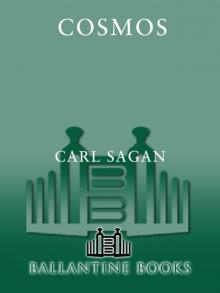 Cosmos
Cosmos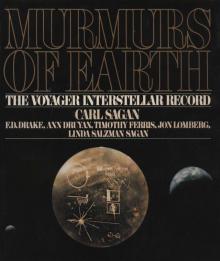 Murmurs of Earth
Murmurs of Earth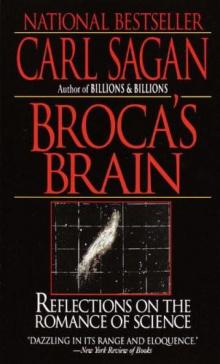 Broca's Brain
Broca's Brain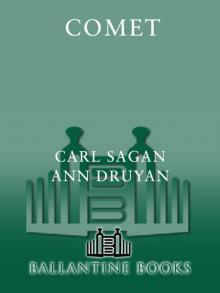 Comet
Comet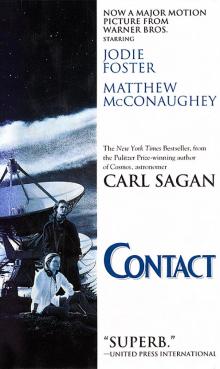 Contact
Contact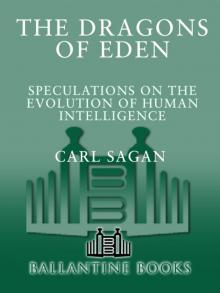 Dragons of Eden
Dragons of Eden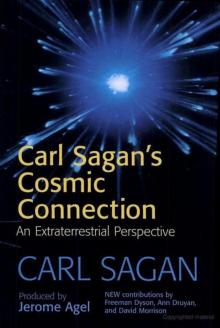 Cosmic Connection
Cosmic Connection Shadows of Forgotten Ancestors
Shadows of Forgotten Ancestors Billions & Billions
Billions & Billions Comet, Revised
Comet, Revised Broca's Brain: The Romance of Science
Broca's Brain: The Romance of Science The Varieties of Scientific Experience: A Personal View of the Search for God
The Varieties of Scientific Experience: A Personal View of the Search for God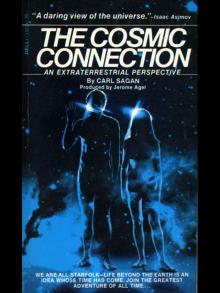 The Cosmic Connection
The Cosmic Connection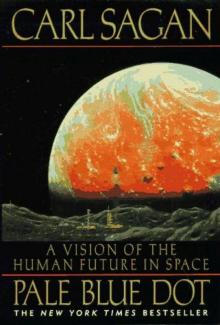 Pale Blue Dot: A Vision of the Human Future in Space
Pale Blue Dot: A Vision of the Human Future in Space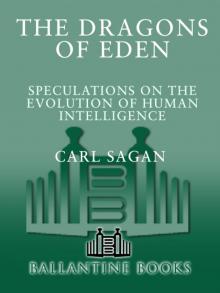 The Dragons of Eden
The Dragons of Eden